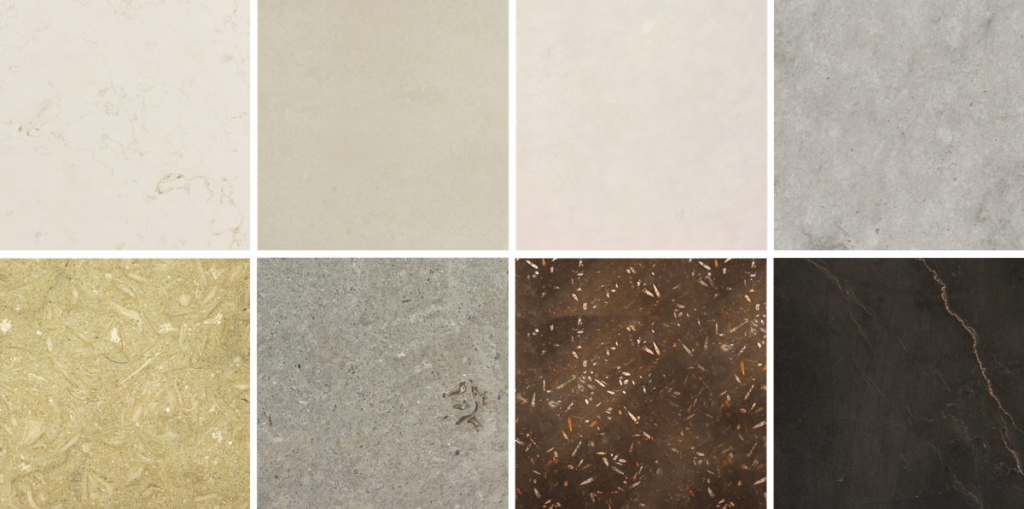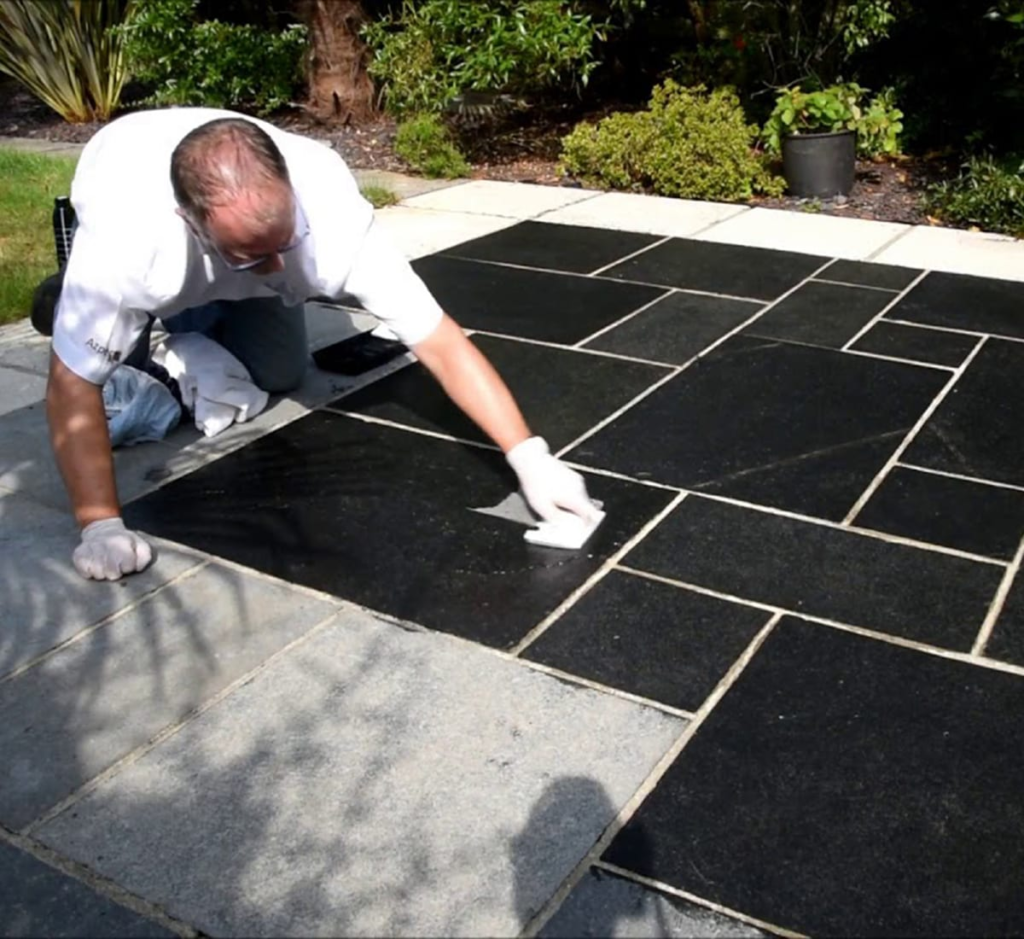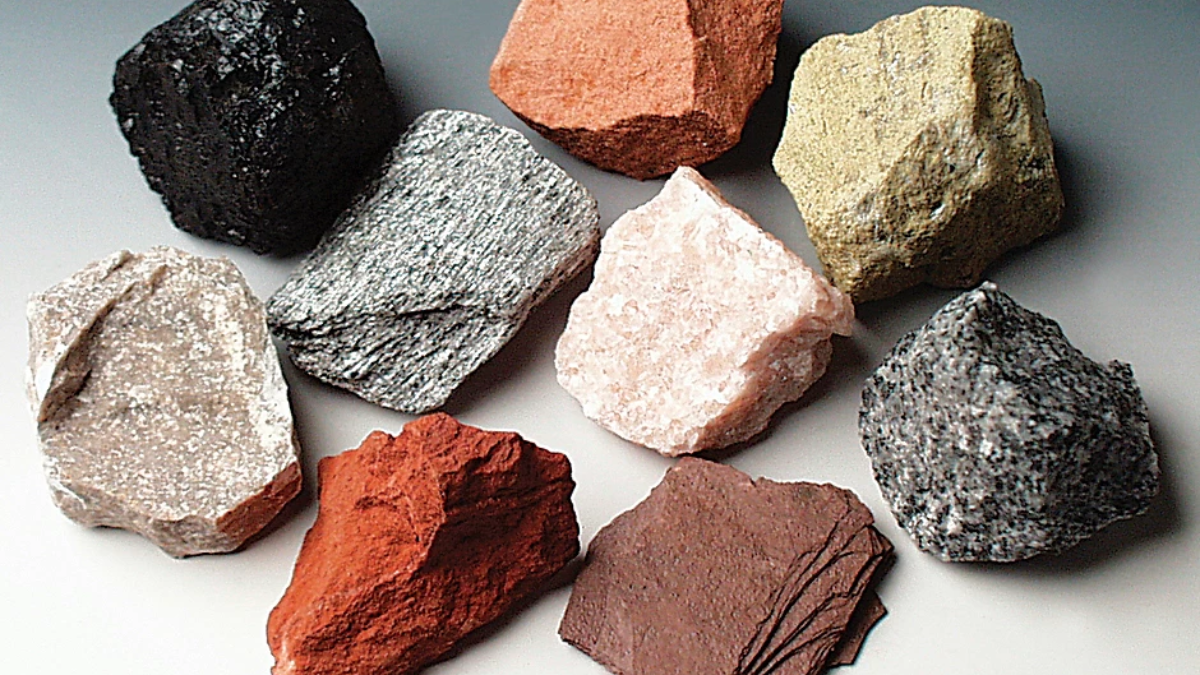
Limestone is a sedimentary rock formed mainly from the skeletal remains of marine animals, coral, and mollusks, the most common types. Because limestone is found worldwide, various regions’ limestone has varied combinations of different minerals and animal remains in a single quarry, making each batch of limestone unique. This uniqueness is most evident in the rainbow of colors that limestone naturally exhibits; each color represents different sediments that reflect light and color within the rock. Explore the range of colors limestone offers and learn where to use them best.
Limestone Formation


Limestone is a mixture of minerals, including calcium carbonate, found in sea deposits. Depending on where it formed, the mineral content and deposits of marine life in various oceans impact the composition of extra minerals found in limestone. ‘True’ limestone is white in appearance. However, it comes in a wide range of hues.
The Vast Range of Colors in Limestone

It is essential to recognize that no limestone slab is perfectly uniform in color or texture due to its natural origins. Even within a single slab that could exhibit noticeable variances, every piece is a distinct creature. Accept the possibility of color changes inside a slab when choosing a limestone hue for your property to provide richness to your unique style.
Beige, Cream, and White



Limestone typically appears in white, beige, or cream hues. Fine White, Rhine White, Yulan Beige, and Ivory Cream are some varieties that add an air of ethereality to open up living areas. These pale colors are frequently used in interior design to create an upward visual pull on stone kitchen hoods, fireplaces, and walls. Their use also includes outdoor features, such as decks, walks, and pool surrounds, where they reflect sunlight and keep things cool.
Blue and Gray

Grey and blue limestone are darker and more sea-inspired than their lighter siblings. Colors like Azul Monica, Sino Blue, Ruoms Adouci, and Vert Giverny are examples of colors frequently used as floor tiles. These colors add visual depth and are prevalent in modern home designs.
Red and Brown

A brown or red color is added to several species of limestone, such as Poiseul, Fontenary Dore, and Chassagne Violine, by the infusion of clay and iron oxide. Some, like Hauteville C Flamme or Rose De Bourgogne B5, even emanate pink or rose tones from them due to a higher quantity of “pure” limestone. These cozy and welcoming colors work well in kitchens, guest baths, and foyers.
Black and Dark Gray

Pompignan and Ruoms, two darker varieties of limestone, offer possibilities for contemporary rooms, especially regarding flooring.
Limestone Impression and the Palette of Colors

Impression is proud to provide premium natural stone with a large selection of limestone that comes in about 50 colors. With so many options available, Impression makes it possible to create the personalized home feature of your dreams.
FAQS
What color is pure Limestone?
Pure limestone is typically white.
Is limestone light or dark?
Limestone generally tends to be on the lighter side of the color spectrum.
Is Lime Stone light Green?
Limestone is not naturally green. Its common colors include white, beige, cream, grey, blue, brown, red, dark grey, and black
What is the primary chemical color of limestone?
The chemical color of pure limestone is white. This color is attributed to the presence of calcium carbonate (CaCO3), the primary chemical compound in limestone.
Final thoughts
In summary, pure limestone has a distinctive white hue that is closer to the lighter end of the range. It is not inherently green in color. Because calcium carbonate is so common in limestone, it gives the material a unique white chemical color.





